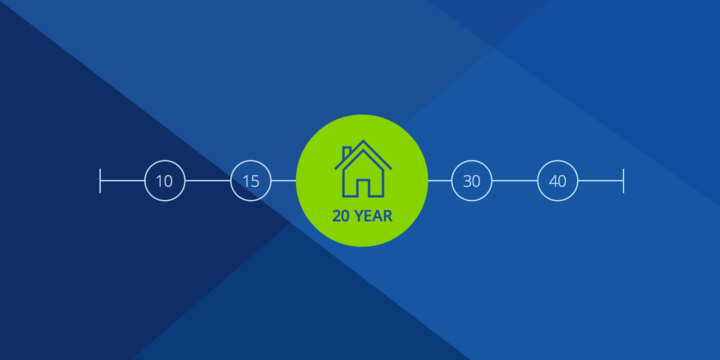Cash-Out Refinance vs HELOC: Which Home Equity Option Is Best?


Written by Tali Bendzak on June 6, 2022
When you have a significant amount of equity in your home, either from paying down your mortgage principal over time or due to market increases, using a home equity line of credit (HELOC) or a cash-out refinance can be a smart way to pay for large expenses, whether you’re doing a home renovation, paying for education, starting a business or pursuing another investment.
But how do you know which home equity option to use? Here’s a breakdown of the similarities and differences between a cash-out refinance and a HELOC.
Cash-out refinance vs HELOC
Both cash-out refinances and HELOCs use your home as collateral, allowing you to tap into a sum of money based on the amount of equity you have. Both options also allow you to use your money for any financial need, without restriction. The key difference between the two is that a cash-out refinance results in a new mortgage on your home, whereas a HELOC is a revolving line of credit you can draw against over time and repay separately from your mortgage.
What is a cash-out refinance?
Like any refinance, a cash-out refinance replaces your existing home loan with a new one. But it also allows you to pull cash from your home’s equity, resulting in a higher loan amount. You make your new, larger monthly payment on a schedule to repay both your home loan and the cash withdrawal.
Cash type: You’ll receive a lump sum in your bank account within three days of closing.
Cash use: You can use the cash you receive for anything.
Rates: Your interest rate will vary based on the kind of mortgage you choose (fixed- or adjustable-rate) and current market conditions. Typically, rates for a cash-out refinance are lower than a HELOC.
Closing costs: Expect to pay between 2-6% of the loan amount in closing costs. Conventional loan closing costs are capped at 3%.
Payment: You’ll make a single monthly mortgage payment that includes financing the cash you withdrew.
What is a HELOC?
A HELOC is a line of credit secured by the equity in your home. This line of credit is accessed independently of a home loan — in other words, you can get a HELOC regardless of whether you have a mortgage. With a HELOC, you’ll have access to a predetermined amount of money, based on your home’s equity at the time you apply. It acts as a revolving line of credit, so you can use only what you need and make a monthly, interest-only payment. After an initial draw period that usually lasts a set number of years, you’ll begin paying back the principal as well.
Cash type: You’ll have access to a revolving line of credit, like a credit card. You will only pay interest on the amount you use, but your full credit limit is available immediately.
Cash use: You can use the money from a HELOC for anything.
Rates: HELOC rates are typically variable, which means rates fluctuate over the life of the loan based on market trends. If you want to avoid the unpredictability of a variable rate, shop around for a lender that offers HELOCs with the option to lock in a fixed rate for a set period of time.
Closing costs: Closing costs are often lower than conventional purchase loans and cash-out refinances.
Mortgage qualification requirements for a HELOC or cash-out refinance
There are some similarities between what it takes to qualify for a HELOC or cash-out refinance. In both cases, you’ll need a solid credit score, sufficient income or assets and a debt-to-income ratio that allows you to take on a bigger monthly payment. Overall, however there are a number of differences between the two options. Here’s what you need to know.
| Qualification | HELOC | Cash-out refinance |
|---|---|---|
| Credit score | 680 minimum, and higher scores will give you more favorable terms | 620 minimum, and higher scores will give you more favorable terms |
| Debt-to-income (DTI) | 40% or less | 50% or less |
| Steady income or reliable assets | Required | Required |
| Retained equity | After opening a HELOC, you must retain at least 15% equity | After the cash-out, you must retain at least 20% equity |
| Seasoning | No requirement | Depending on lender, you must have owned your home for 6 - 12 months before you can get a cash-out refinance |
Lenders work from the same guidelines, but each lender may have different requirements based on risk tolerance. Shop and compare lenders until you find the one with the best terms for your unique situation.
Reasons to choose a cash-out refinance instead of a HELOC
There are many benefits of choosing a cash-out refinance instead of a HELOC, including in cases when you have a specific need for the money. Here are a few of the key reasons why a cash-out refinance might be right for you.
Access a large sum of money at a low cost
Since you repay the cash you’ve withdrawn over the length of your mortgage (typically 15 or 30 years), a cash-out refinance can be a low-cost way to access the money you need — as long as mortgage rates are low. This makes a cash-out refinance a great solution for big expenses like home renovations.
Pay off high-interest debt or bills
Because the interest rate you’ll lock in is likely lower than that of a personal loan or credit card, many people use a cash-out refinance to pay off high-interest debt or bills.
Make other investments
Leveraging your home’s equity to make other investments and meet your financial goals can be a strategic move.
Boost available savings for unexpected life events
When your personal finances or the economy as a whole feels uncertain, a cash-out refinance liquidates some of your equity for the sake of diversification.
Reasons to opt for a HELOC instead of a cash-out refinance
A cash-out refinance isn’t always the right path forward. There are many reasons people decide to get a HELOC instead, especially if your financial needs are less defined. Here are a few of the most common reasons people opt for a HELOC.
Need an undetermined amount of cash
With a HELOC, you’ll only pay interest on the amount of cash you actually use. This setup gives you flexibility if you’re not sure exactly how much money you’ll need. Sometimes home improvements fall into this category, as do legal fees and medical costs.
Create an emergency fund
Many people use HELOCs as an emergency fund. Beyond closing costs, you won’t pay anything until you access the cash, so having an open line of credit can provide peace of mind in case unexpected expenses occur — like a structural issue in your home, the loss of a job or a major medical issue.
Shop for a new home
Buying and selling at the same time can be financially complicated, so homeowners sometimes use a HELOC to unlock the equity they need for a down payment on a new home. Once their old home sells, they pay off the HELOC with the proceeds of the home sale.
Complete home improvements with tax-deductible interest
There can be some tax advantages to using a HELOC for home renovations. If you use a HELOC to improve your home, not only are you accessing the cash you need in a relatively affordable way, but the interest on the money spent on renovations is often tax-deductible. Ask your tax professional for details.
Home equity loan vs cash-out refinance or HELOC
A home equity loan is yet another way to access your home’s equity. Like a HELOC, it’s separate from your home’s mortgage. But, instead of drawing from a revolving line of credit, with a home equity loan you receive a lump sum of cash. Home equity loans typically have higher interest rates than HELOCs or refinances, but you’ll enjoy a fixed rate and a predictable repayment schedule.
Tap into your home equity
Zillow makes it simple to explore your options for a Home Equity Line of Credit.
Zillow Group Marketplace, Inc. NMLS #1303160
Get startedRelated Articles
Get a mortgage with Zillow Home Loans
Go from dreaming to owning with low down payment options, competitive rates and no hidden fees. A dedicated loan officer will guide you until you have your keys in hand.

Zillow Home Loans, NMLS #10287. Equal Housing Lender.



